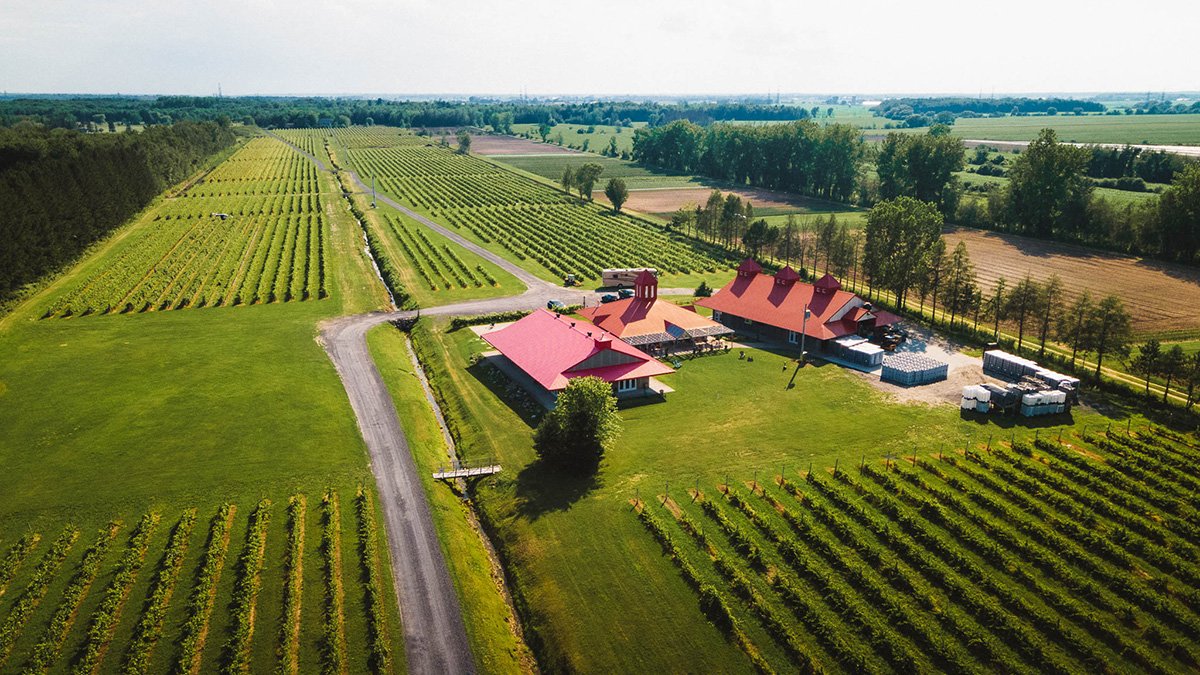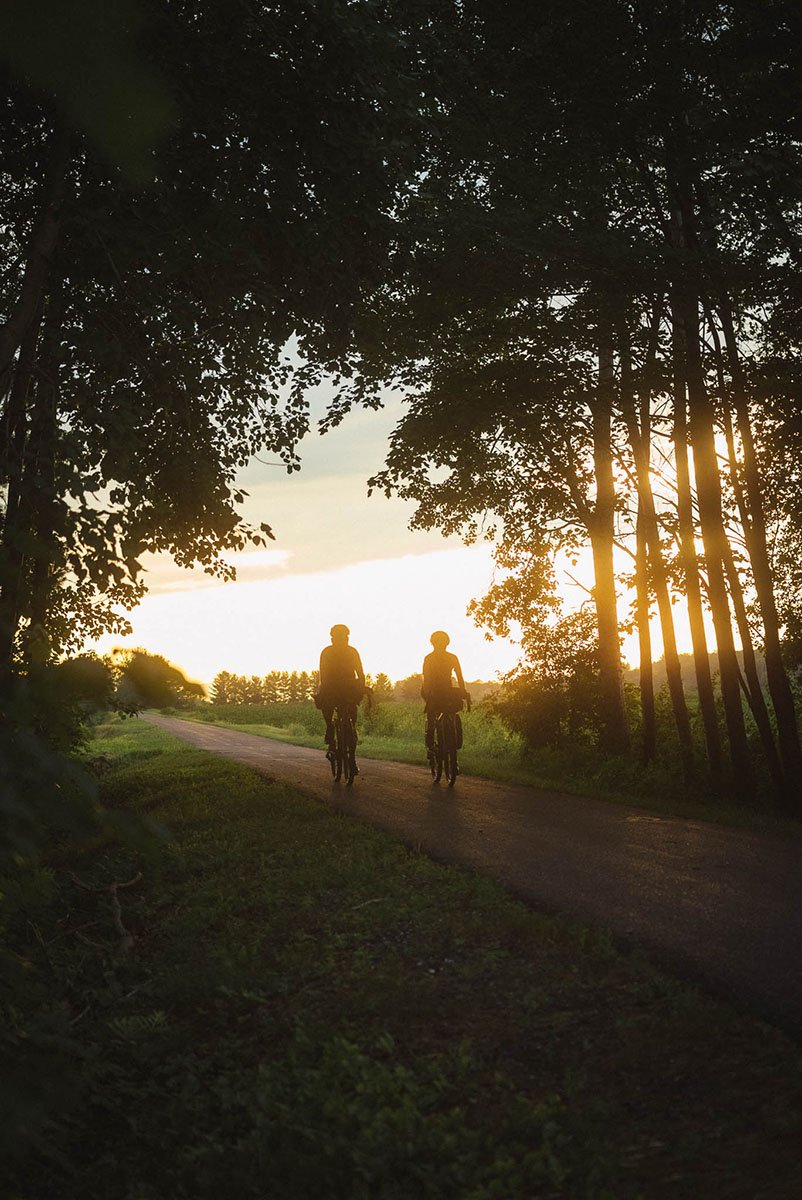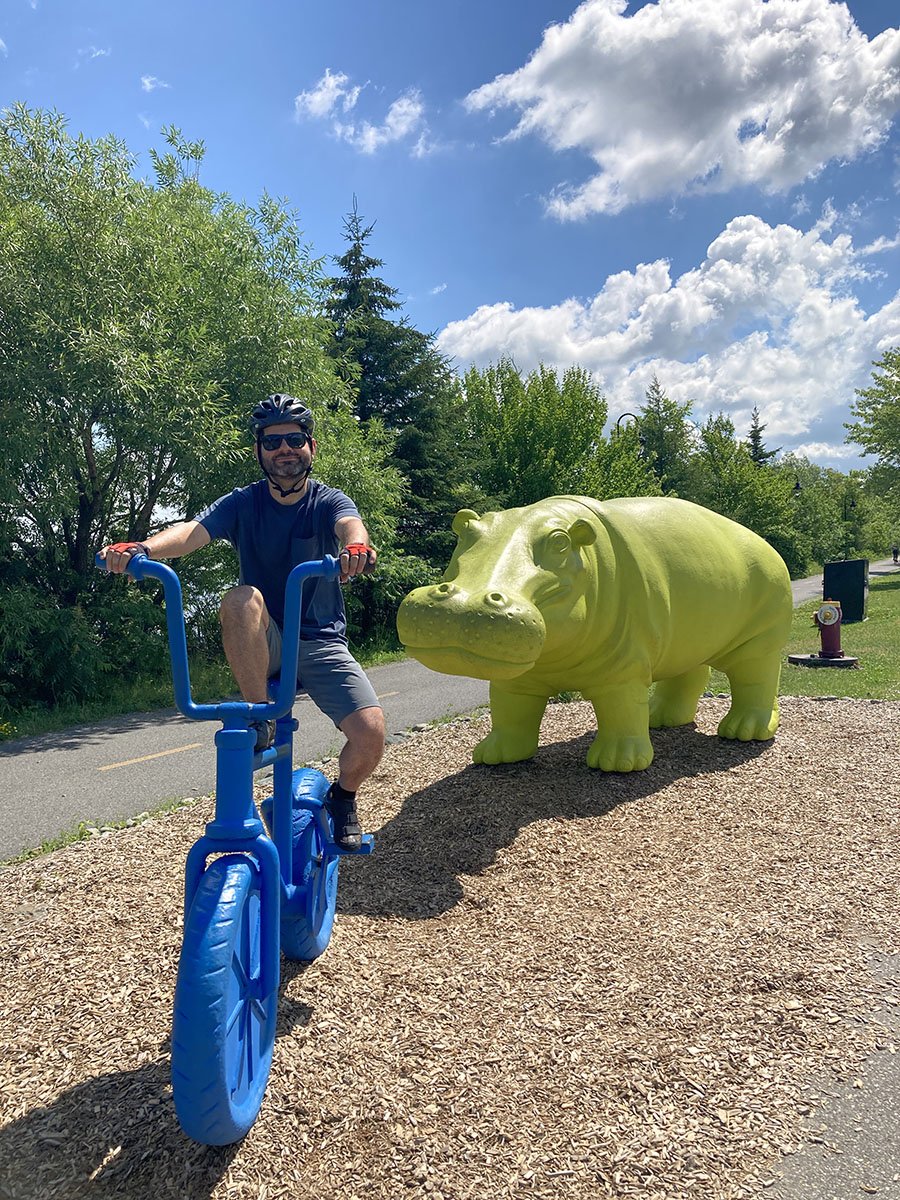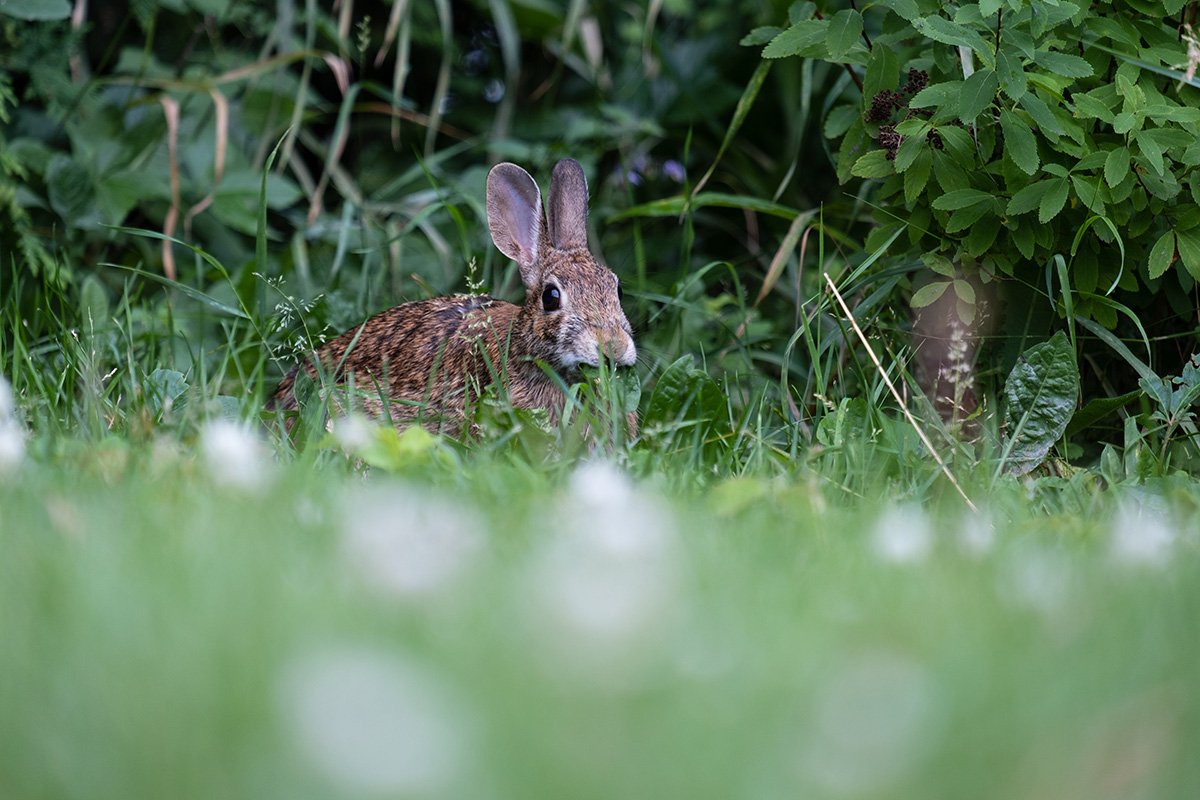On the slopes of Montérégie
In a dense network of cycle paths, I visit an old fort, drink a festive cider, ride a lime-green hippopotamus and play the piano by the water's edge. Welcome to Montérégie!
This article first appeared in the excellent magazine Vélo Mag, March 2022 edition. You will also find a video produced for the webseries of la Route verte at the bottom of the article.
128 km in two days in Montérégie.
Our little two-day loop begins in Saint-Jean-sur-Richelieu. With a few pedal strokes, our trio of musketeers reaches the Richelieu River – named in honor of the famous cardinal – which flows north from Lake Champlain to the St. Lawrence River.
From there we embark on the charming Chambly Canal bike path, a mixture of stone dust sections and asphalt sections. Between our starting point and the Chambly basin, the steeper elevation of the Richelieu forced the construction of a parallel canal over some twenty kilometers in the 1830s. We follow him on bicycles through the nine locks, eight of which are still manually controlled by Parks Canada employees, to the delight of many boaters.
Along the trail lined with purple, pink, yellow and white wildflowers, we come across several historical signs. Due to the strategic importance of the river that linked New France to New England, several military fortifications were erected on its banks. On Sainte-Thérèse Island, the largest in the river, a few ropes stretched between stakes recall the shapes of the eponymous wooden fort, built in 1665.
A preserved fort
Facing the Chambly basin, formed by a widening of the Richelieu River, we arrive in front of the most imposing of all these old forts, that of Chambly.
Our young guide, Alexia, a smiling student and passionate about history, tells us that at the beginning of the XNUMXth century the fourth and last iteration of this fort was built of stone rather than wood, since "the enemy had changed ". Indeed, if the first fortifications made it possible to defend themselves during the Iroquois wars, this one had rather to resist the artillery of the British.
The visit to the site follows the course of the different eras – French, British and Canadian – and includes information on the Aboriginal peoples as well as on the ways of life over the centuries. One of the exhibitions presented on the site, also managed by Parks Canada, is devoted to Joseph-Octave Dion, a pioneer of conservation in the country. As early as 1866, this man became interested in saving the buildings of Fort Chambly, which had been abandoned for 15 years. He organized visits and undertook the renovation of the site, which he even lived in for 35 years, until his death in 1916.
The great Fort Chambly, on the banks of the Richelieu. (Credit Guillaume Milette)
My cameraman and friend Guillaume and our guide Alexia accompany me to Fort Chambly.
Light and festive in Rosemont
Again on our mounts, we pass in front of some luxurious ancestral houses, then cross the Richelieu River towards the municipality of the same name. After traveling a few kilometers parallel to Route 112, we enter Marieville to take the Route des Champs bike path. Two-thirds asphalted, slender and fast, it bears its name beautifully, given the countless rows of small green shoots that surround us. In barely a dozen kilometres, we are already in Rougemont.
We take advantage of our visit to pay a visit to the Domain of Lavoie, one of the many vineyards and orchards in the area. We are received by Hugues Lavoie, co-owner of the company with his parents. The latter, Gaspésiens, fell in love with the region while going to pick apples, and also with the idea of being farm owners while they were still studying in Montreal.
Domaine de Lavoie, an orchard and vineyard in Rougemont. (Credit Guillaume Milette)
The tens of thousands of vines, apple trees and even pear trees now produce a panoply of nectars, which can be tasted on site.
Hugues first serves us a sparkling cocktail of apples and hops, "light enough to hit the road afterwards!" he assures us with a smile.
Our host, whose passion is contagious, instructs us at the same time on the grape varieties that are best adapted to the climate of Quebec. He also explains to us that apple trees grow better on hillsides, in particular because of better drainage and more sunshine.
By noticing the change of colors in the sky, we realize that we spent several hours at the domain. After thanking our generous winemaker, we embark on the Field road, traveling some 35 km towards Saint-Paul-d'Abbotsford and Granby, which will end our day.
Rural landscape near Saint-Paul-d'Abbotsford.
On the Route des Champs, near Saint-Paul-d'Abbotsford. (Credit Guillaume Milette)
The world of Granby
The next morning, in Granby, I had planned to meet François Lebeau, The Bicycle Shop, in order to talk about his home bike mechanic services. And by a coincidence that one would swear arranged, the sun rises on a puncture in my rear tire.
"Do you think it's because I was driving too fast and too hard?" I ask him with a wink as he arrives on his e-bike pulling a big trailer full of gear. " Surely ! answers me, certainly to please me, the Frenchman who has been living in Quebec for several years. The repair is done in minutes.
Our trio leaves and then crosses the Yamaska River, where it widens to become Lac Boivin. At the junction of the L'Estriade and The Monteregiade, we make a brief stop to admire the sculpture of a large blue bicycle and that of a huge lime green hippopotamus. A man seated at the nearby picnic table strikes up a conversation. He teaches us that we find these colorful animals everywhere in Granby. “There is a red giraffe, a turquoise camel in a park, a yellow meerkat further…”
Another man, dressed in Lycra, approaches to praise the merits of the two Granby sculptors responsible for these works of art.
The smiling cyclist says he lives in Montreal, but comes to ride in Granby because "the track is beautiful, all asphalt, no stop, no red lights… it's wonderful! ".
A few kilometers and a pink elephant further, we meet the Barthe family. The New Quebecer couple originally from France now resides in Montreal and decided, with their three young children, to visit their new home in cycling mode. They covered a pleasant Montérégie loop of 350 km from their residence.
With the hippopotamus, one of Granby's many colorful animals.
Compulsory detour for a soft cream (with lemon!) in Farnham.
All kinds of encounters are possible!
Surprises along the way
Between Granby and Saint-Jean-sur-Richelieu, our return via La Montérégiade is almost entirely in a straight line, except for a few detours at Farnham. We stop for a few moments on the bank of the Yamaska River, at Conrad-Blain Park, where we find a public piano that has been placed prominently in the center of a plain cobblestone square.
I was pleasantly surprised by this Monteregian itinerary, despite its flat and filiform appearance. The long straight tracks which appeared to me as a disadvantage finally turned out to be one of the great attractions of this circuit.
For families who wish to cover the territory in a few days, to heavy riders who prefer speed, to us, slightly festive cyclists who like to stop to chat, this portion of la Route verte, with its tentacles, has something for everyone.
Landmarks
Itinerary: 128 km in two days See on Google Maps.
Bike paths taken: Le Chambly canal, Field road, And the Monteregiade.
MY GOOD ADDRESSES
- Experience the era of New France and the way of life of our ancestors at Fort Chambly National Historic Site, a popular Parks Canada site in the Richelieu Valley.
- The Montérégie has many vineyards and cider houses, including the Domain of Lavoie, in Rougemont. Stop here for a tasting or a chat. Their products can also be found on the shelves of the SAQ.
- To slightly lengthen the circuit, La Granbyenne is a 12 km paved cycle path that circles the Lac Boivin Nature Interpretation Center, in Granby. You can also observe many birds on the various trails, where some footbridges overlook swamps.
- Discover the city of Granby and its giant sculptures of colorful exotic animals.
- For bike mechanic services in the Granby area, call François Lebeau, from The Bicycle Shop.
The good world of la Route verte is a 10-episode web series, which I produced for Vélo Québec. All episodes are available for free here.

















Impossible to miss the vast Gatineau Park which, on the map of the Outaouais, expands like smoke from a campfire. By combining it with the cycle paths of la Route verte, I was drawn to its many trails, lakes, and stretches of forest that seemed to invite me personally.